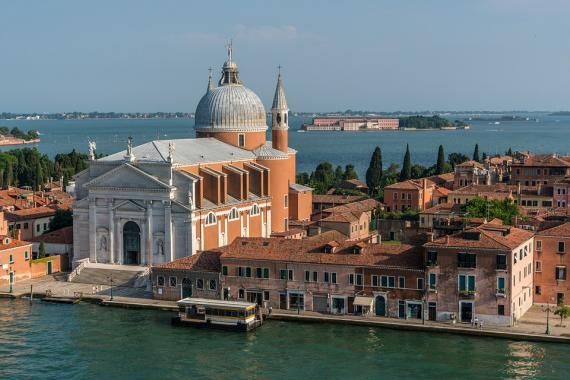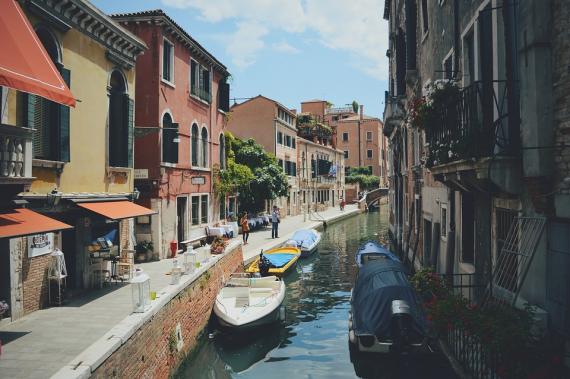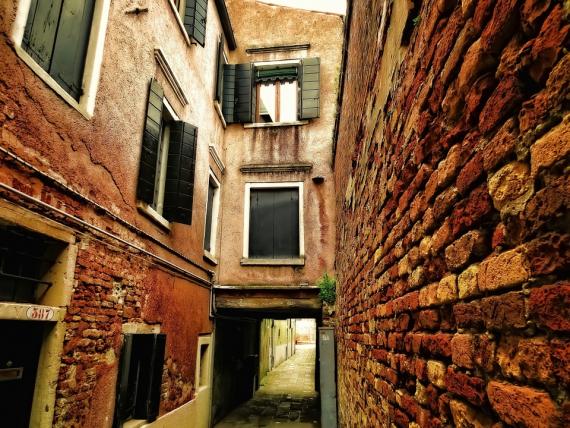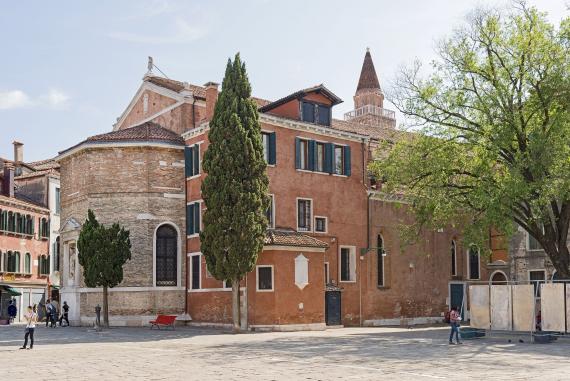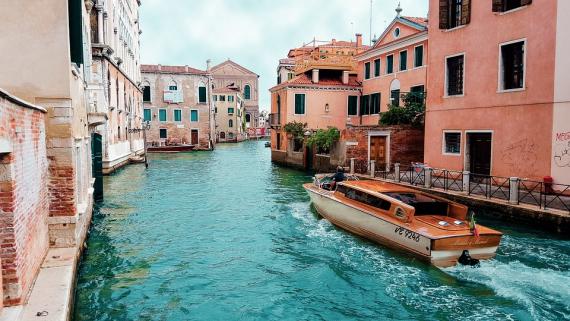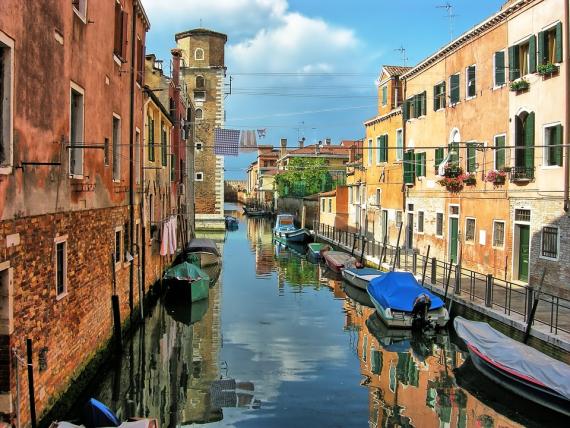Giudecca is the biggest Venetian island and the nearest to the old town center.
The city of Venice is divided into six districts called sestrieri. Each sestriere has different progressive street numbers except for the biggest areas, which include separate islands.The six sestrieri of Venice are: San Marco, taking his name from San Marco's Church, Castello, one of the first Venetian area to be inhabited, its name from an ancient castle now disappeared, Cannaregio, from the morass where a grove of reeds used to grow, San Polo, the city centre and Santa Croce, the smallest district, Dorsoduro, from the thick sandy hills over which the district has raised and Giudecca, from the name of this separate island facing Zattere.
In the southern part of the city, from the Punta della Dogana until the square tower, on which some bronze statues support the golden façade, where the Fortuna lays, work by Bernardo Falcone.
This district is situated on the northeast side of the city, and thanks to Piazzale Roma links Venice to the mainland.
It is the smallest district, it distinguish itself for the dense number of “casa e bottega” which means houses and shops in the same buildings. In San Polo, there is a Venetian vocation of old and noble ancestry: the pleasure of good eating.
Its name may have two possible explanations: the first wants the name coming from “Canal Regio”, which is the name of the main connection by water with the mainland; the second justifies it for the many rushes there were, referring to the name “region cannarum”.
The district of Castello was one of the first to be inhabited in the city (V-VI century).
Its name comes from the castle (in Italian “castello”) rising there, as protection for sea’s assaults. Here there is the majestic Arsenale, which was believed to be the biggest in the world.

